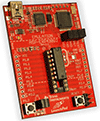Hello Android
Finally I could get Android Early SDK up and running on my Fedora Core-7 Machine.
The process was quite simple. However I had to struggle for a few days, because Fedora install the gnu version of Java and Android requires Java from Sun.
Here are the steps I had to follow:
(1) Install the eclipse IDE (if you do not have it already) with following command:
$> yum install eclipse-jdt eclipse-jdt-sdk (to be done as super user).
(2) now install the Android SDK and ADT plug-in for Eclipse...
Configuration Management: Why Developers are Avert to
A few reasons why developers have aversion towards "Software Configuration Management Systems"
(1) They do not understand the importance of configuration management. - It is a common and logical reason. But, it is also a very dangerous sign for any organization. If their developers do not understand the importance of configuration management; then it is highly likely that developers even do not understand the other fundamentals of software development. The situation becomes worst...
Embedded Space & Software Development Practices
Embedded Programmers (at least the ones I know) are mostly at liberty to ignore the basic software development best practices, thanks to the simplicity of embedded applications. But, as the embedded processors are becoming more and more powerful, this situation might change soon. In coming years the embedded software applications are bound to become more complex (some embedded segments have already seen this change). Embedded programmers need to realize this inevitable change and start...
Designing Embedded System with FPGA - 1
With the introduction of soft processors and related tools (like EDK from Xilinx), implementation of basic embedded system in FPGA is made easy. This requires very little or almost no knowledge of VHDL programming. Actually that’s how I started. If user is interested in taking full advantage of FPGA and its parallel processing power, then yes, detail understanding of soft processor, its peripheral bus and VHDL programming is required.
I will start with...
Thumb Rules for Effective Meetings
Meetings are unavoidable at any work place. At most occasions, meetings can be frustrating. We all face meeting-nightmares in our professional life.
I worked on a project, where none of the team-members were ever interested in any kind of group discussion or formal communication. At early stages of the project, no one wanted to be a part of decision making process. During middle-stages of the project, no one wanted to share any status updates or discuss any critical issues. And finally when...
Tenderfoot: Embedded Software and Firmware Specialties
Once upon a time (seven years ago) I answered a question on Stack Overflow. Then Stephane suggested I turn that answer into a blog post. Great idea! This post dives deeper into the original question: “Is it possible to fragment this field (embedded software and firmware) into sub-fields?”
This post represents a detailed and updated response to my original Stack Overflow answer. I hope this post provides guidance and useful information to the “tenderfoots” in the...
AI at the Edge - Can I run a neural network in a resource-constrained device?
Hello Related Communities,
This is my first time blogging since joining Stephane in November. He and I were at Embedded World together and he asked me to write about some of the important trends as they relate to all of you. I expect to post others in the near future, but the biggest trend in the embedded space was all of the activity around artificial intelligence (AI) at the edge.
This trend caught me a bit by surprise. I have been doing a lot of reading about AI over the last...
Configuration Management: Why Developers are Avert to
A few reasons why developers have aversion towards "Software Configuration Management Systems"
(1) They do not understand the importance of configuration management. - It is a common and logical reason. But, it is also a very dangerous sign for any organization. If their developers do not understand the importance of configuration management; then it is highly likely that developers even do not understand the other fundamentals of software development. The situation becomes worst...
Welcome to my life!
Hi folks!
As an electronic engineer the most of my work is about making new designs where a microcontroller is present in 99.9 % of the applications. Since 2003 I am self-employed and do consultants work for different companies. I have been traveling to different parts of the world doing work for DeLaval International, a company that makes automation equipment for the dairy industry. A lot of the things I have done for them involves use of different Atmel AVR...
Favorite Tools: C++11 User-defined literals
In many software domains units of measurement are frequently critical to the software's data processing requirements. Those same units, or rather the use of the wrong units, are often the source of bugs and disastrous mistakes. Although useful for other purposes, user-defined literals are an excellent addition to the C++11 standard and handy when working with units of measurement.
Suppose a device measures velocity. To help prevent errors, the software specification requires...
Review: Prototype to Product
Prototype to Product: A Practical Guide for Getting to Market, by Alan Cohen, is a must-read for anyone involved in product development, whether in a technical, management, or executive role.
I was reminded of it by Cohen's recent episode on Embedded.fm, 388: Brains Generate EMF, which is worth listening to a couple times through, especially if you're interested in medical device development. And in fact his first episode there,
Software is free and can right any wrong
Software changes are so much easier than hardware modifications, so the temptation is always to take this approach to fixing bugs. This may not always be a good idea.
Video-Based STEM Embedded Systems Curriculum, Part 2
Contents:- Introduction
- Lesson Plan 1: Introducing Arduino
- Lesson Plan 2: Circuit Drawings With Fritzing
- Lesson Plan 3: Basic Electronics
- Coming Soon
This post continues from part 1. It contains the first three lesson plans.
Lesson Plan 1: Introducing ArduinoThis lesson is first because Arduino is the simplest programming environment, yet allows lots of interaction with hardware. In...
Unraveling the Enigma: Object Detection in the World of Pixels
Exploring the realm of embedded systems co-design for object recognition, this blog navigates the convergence of hardware and software in revolutionizing industries. Delving into real-time image analysis and environmental sensing, the discussion highlights advanced object detection and image segmentation techniques. With insights into Convolutional Neural Networks (CNNs) decoding pixel data and autonomously extracting features, the blog emphasizes their pivotal role in modern computer vision. Practical examples, including digit classification using TensorFlow and Keras on the MNIST dataset, underscore the power of CNNs. Through industry insights and visualization aids, the blog unveils a tapestry of innovation, charting a course towards seamless interaction between intelligent embedded systems and the world.
Embedded Systems Co-design for Object Recognition: A Synergistic Approach
Embedded systems co-design for object recognition is essential for real-time image analysis and environmental sensing across various sectors. This methodology harmonizes hardware and software to optimize efficiency and performance. It relies on hardware accelerators, customized neural network architectures, memory hierarchy optimization, and power management to achieve benefits like enhanced performance, lower latency, energy efficiency, real-time responsiveness, and resource optimization. While challenges exist, co-designed systems find applications in consumer electronics, smart cameras, industrial automation, healthcare, and autonomous vehicles, revolutionizing these industries. As technology advances, co-design will continue to shape the future of intelligent embedded systems, making the world safer and more efficient.


























